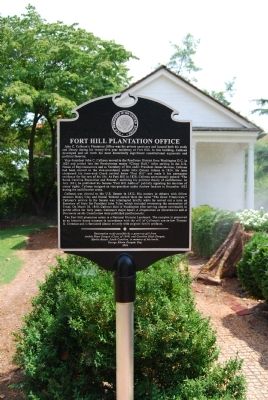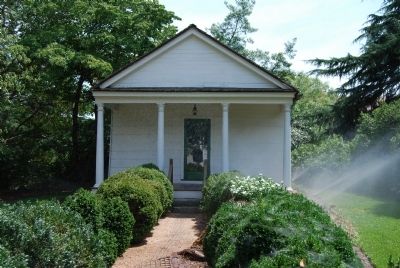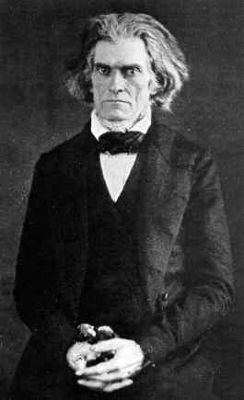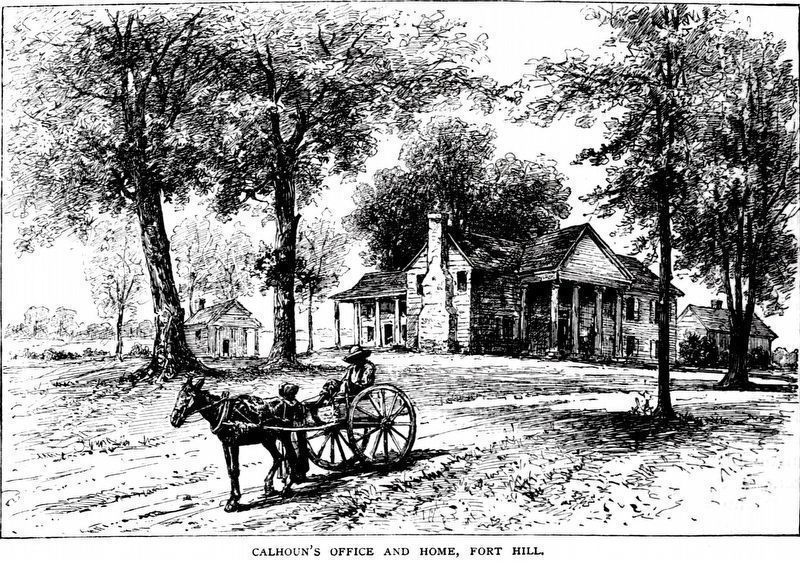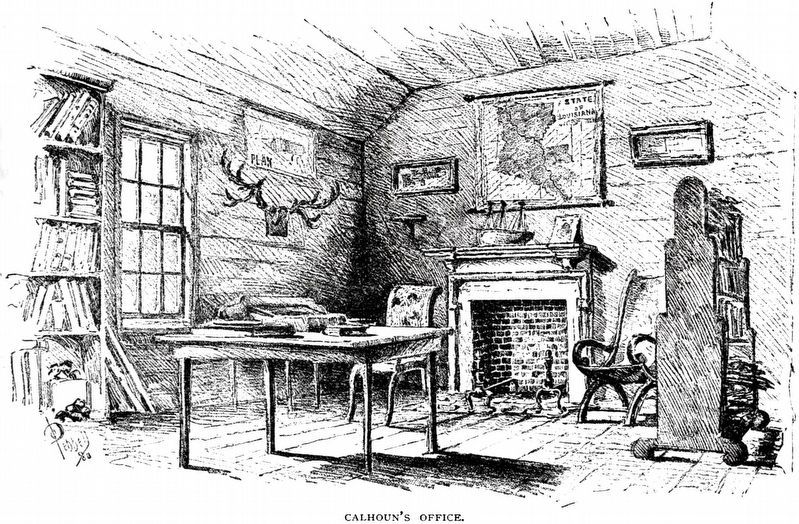Clemson in Pickens County, South Carolina — The American South (South Atlantic)
Fort Hill Plantation Office
John C. Calhoun's Plantation Office was his private sanctuary and housed both his study and library during his twenty-five year residency at Fort Hill. In this building Calhoun developed and set forth his most historically significant constitutional arguments and political theories.
Vice-President John C. Calhoun moved to the Pendleton District from Washington D.C. in 1825 and settled into the Presbyterian manse "Clergy Hall." After serving in the U.S. House of Representatives and as Secretary of War under President James Monroe, Calhoun had been elected to the vice-presidency under John Quincy Adams in 1824. He later christened his renovated Greek revival home "Fort Hill" and made it his permanent residence for the rest of his life. At Fort Hill in 1828, Calhoun anonymously penned "The South Carolina Exposition and Protest," outlining his political theory of nullification. In July 1831, he published his famous "Fort Hill Address" publicly signaling his doctrine of states' rights. Calhoun resigned as vice-president under Andrew Jackson in December 1832 during the nullification crisis.
Calhoun was elected to the U.S. Senate in 1832. His oratory in debates with fellow senators Henry Clay and Daniel Webster earned them the name "The Great Triumvirate." Calhoun's service in the Senate was interrupted briefly while he served out a term as Secretary of State for President John Tyler, which included overseeing the annexation of Texas. On March 30, 1850, Calhoun died in Washington after serving almost continually in public office for forty years. Calhoun's major books A Disquisition on Government and Discourse on the Constitution were published posthumously.
The Fort Hill plantation estate is a National Historic Landmark. The complex is preserved as an historic house museum in accordance with the will of Calhoun's son-in-law Thomas G. Clemson and is furnished almost entirely with original family artifacts.
Archie Shaw Dargan (Class of 1949) and Caroline Sligh Dargan,
Myrtle Beach, South Carolina, in memory of his uncle,
George Edwin Dargan, Esq.
Erected 2003.
Topics and series. This historical marker is listed in these topic lists: Agriculture • Industry & Commerce • Settlements & Settlers. In addition, it is included in the Former U.S. Presidents: #05 James Monroe, the Former U.S. Presidents: #06 John Quincy Adams, the Former U.S. Presidents: #07 Andrew Jackson, the Former U.S. Presidents: #10 John Tyler, and the National Historic Landmarks series lists. A significant historical month for this entry is March 1758.
Location. 34° 40.715′ N, 82° 50.331′ W. Marker is in Clemson, South Carolina, in Pickens County. Marker is on Fort Hill Street. Marker is located directly behind Fort Hill, on the walking path to the Plantation Office. Touch for map. Marker is in this post office area: Clemson SC 29631, United States of America. Touch for directions.
Other nearby markers. At least 10 other markers are within walking distance of this marker. Fort Hill (here, next to this marker); Site of the First Meeting of the Board of Trustees of the Clemson Agricultural College (here, next to this marker); a different marker also named Fort Hill (within shouting distance of this marker); a different marker also named Fort Hill (within shouting distance of this marker); Trustee House (about 300 feet away, measured in a direct line); a different marker also named Fort Hill (about 400 feet away); Sirrine Hall (about 500 feet away); Hardin Hall (about 500 feet away); Walter T. Cox, Jr. (about 500 feet away); Riggs Hall (about 500 feet away). Touch for a list and map of all markers in Clemson.
Also see . . . The South Carolina Exposition and Protest. (Submitted on July 26, 2008, by Brian Scott of Anderson, South Carolina.)
Credits. This page was last revised on August 12, 2021. It was originally submitted on July 26, 2008, by Brian Scott of Anderson, South Carolina. This page has been viewed 2,583 times since then and 28 times this year. Photos: 1, 2. submitted on July 26, 2008, by Brian Scott of Anderson, South Carolina. 3. submitted on March 17, 2009, by Mike Stroud of Bluffton, South Carolina. 4, 5. submitted on July 4, 2019, by Allen C. Browne of Silver Spring, Maryland. • J. J. Prats was the editor who published this page.
